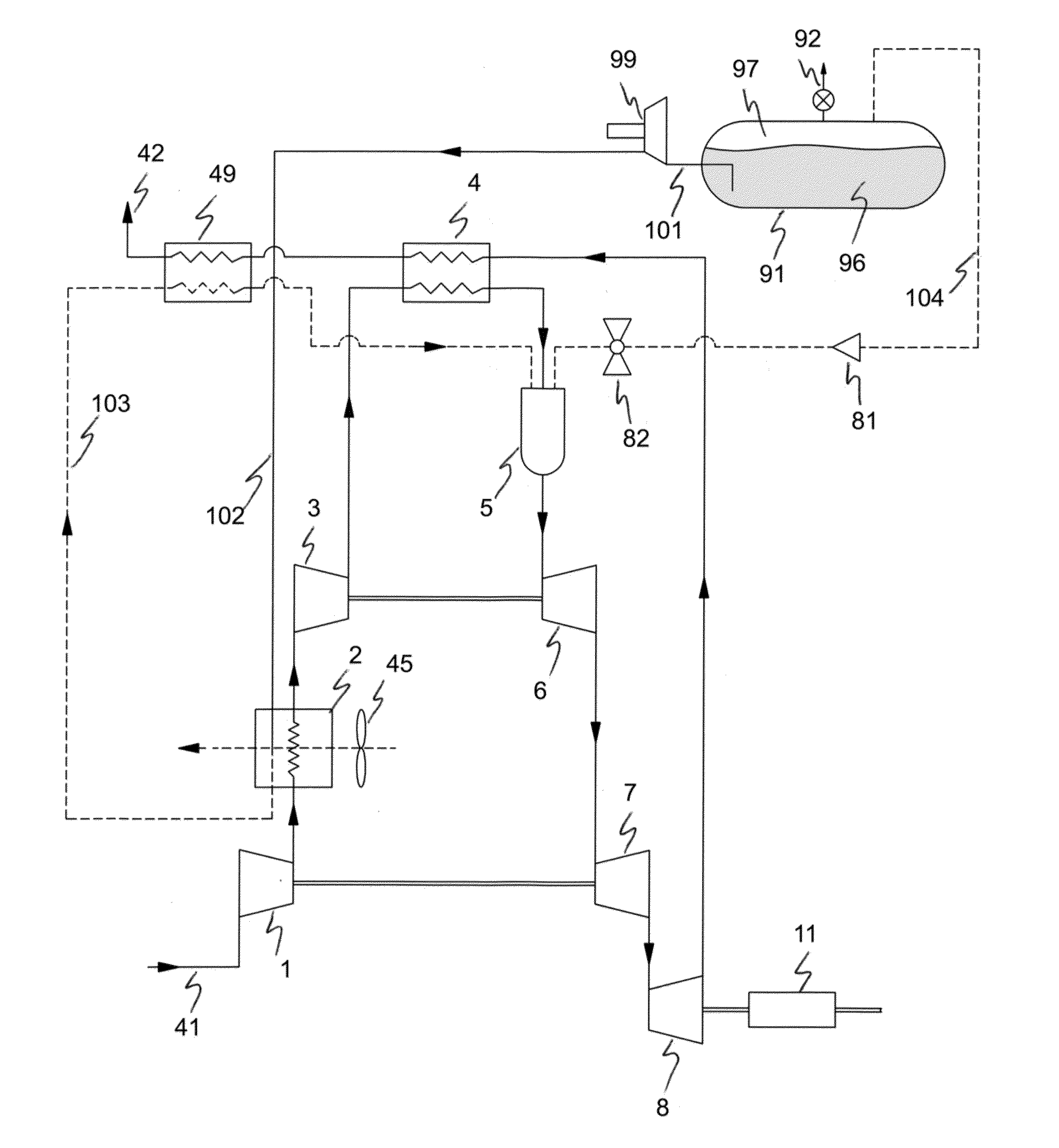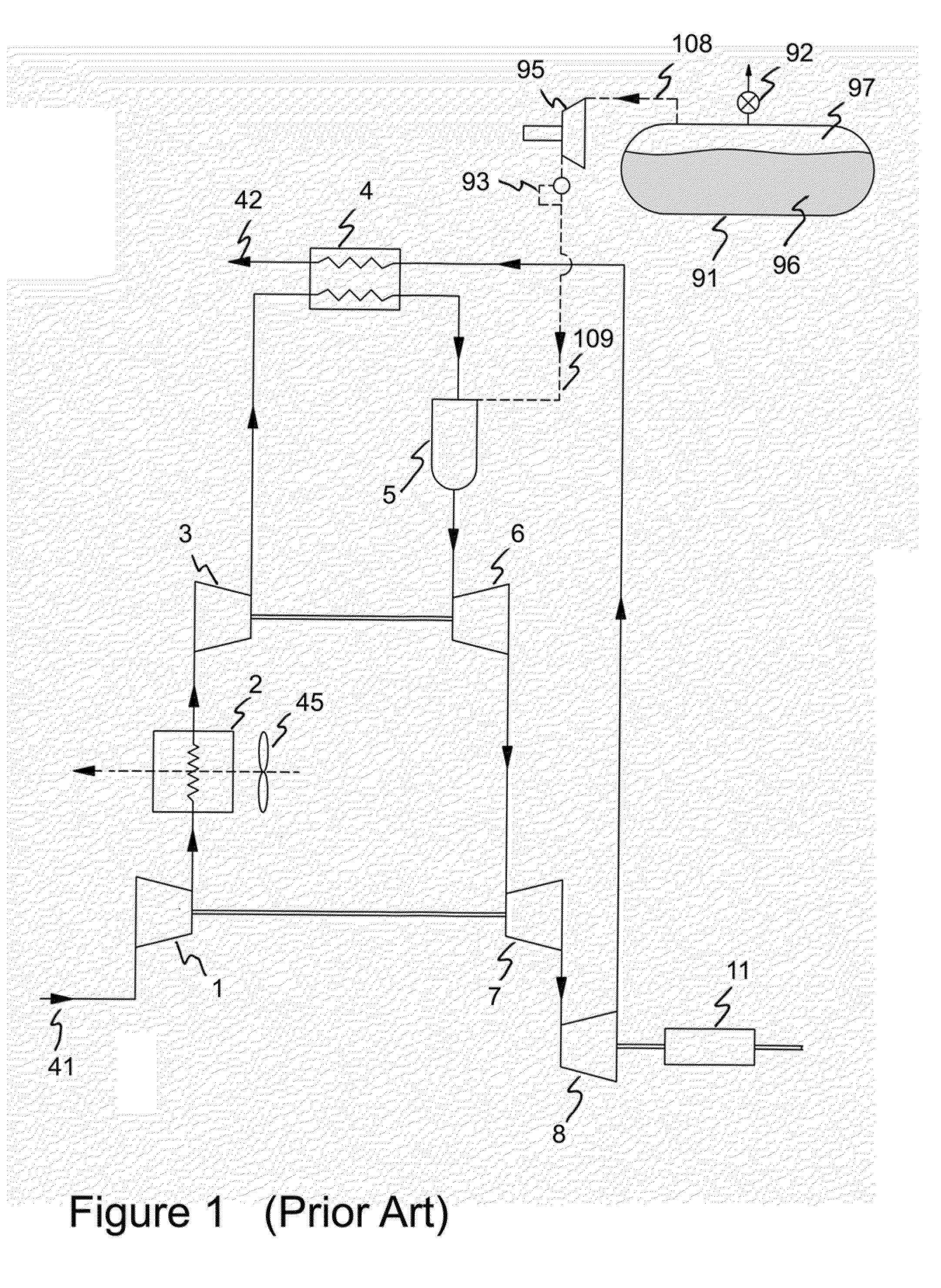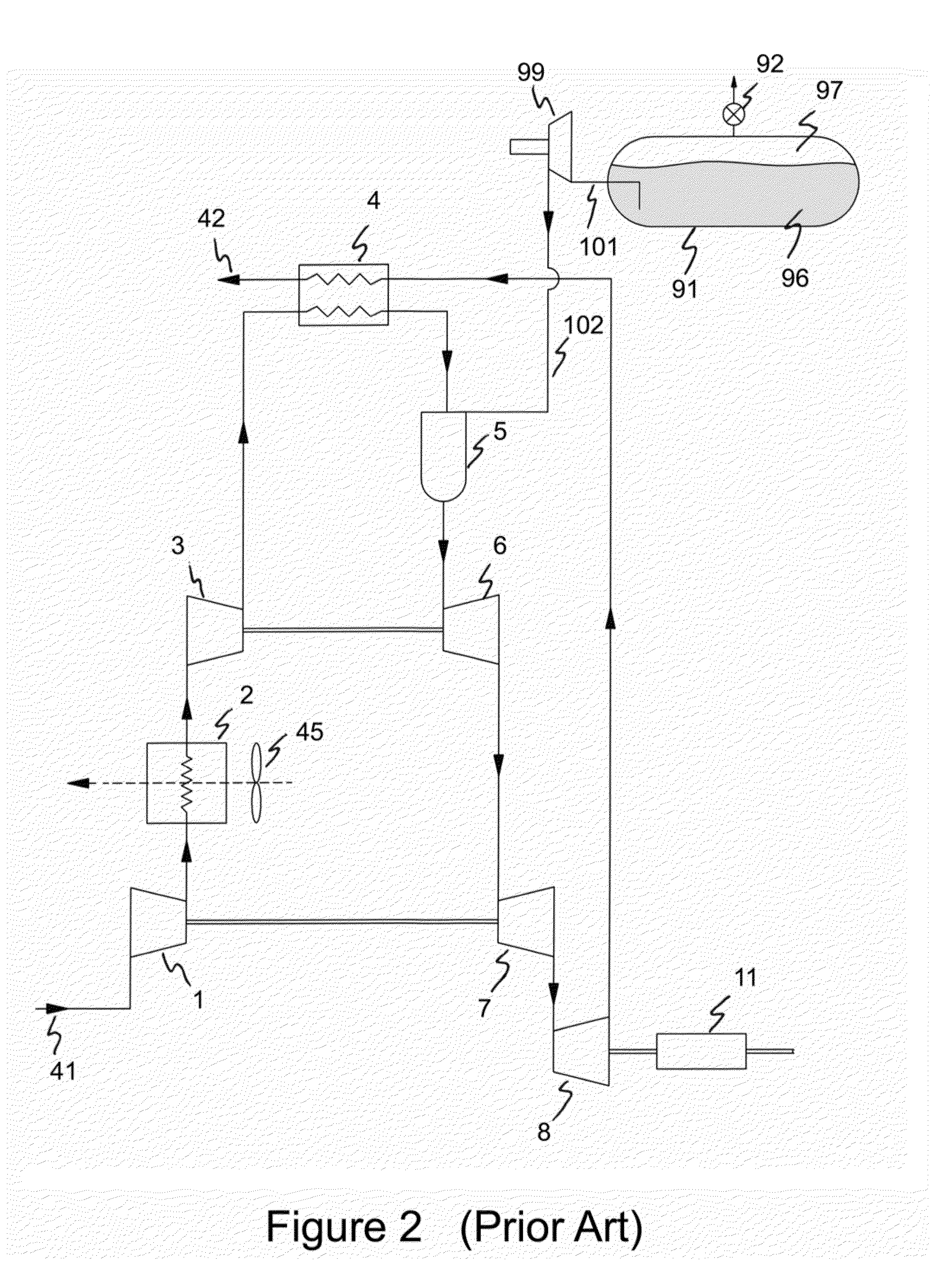LNG fuel handling for a gas turbine engine
a gas turbine engine and fuel handling technology, applied in the direction of turbine/propulsion engine ignition, turbine/propulsion fuel heating, engine starters, etc., can solve the problem of liquid-vapor interface burning, and achieve the effect of improving engine efficiency and reducing emissions
- Summary
- Abstract
- Description
- Claims
- Application Information
AI Technical Summary
Benefits of technology
Problems solved by technology
Method used
Image
Examples
Embodiment Construction
[0101]FIG. 1 is a schematic representation of a prior art LNG fuel system for injection of LNG fuel vapor into a gas turbine engine, shown here, for example, as an intercooled, recuperated gas turbine engine. The working fluid gas (typically air) for the gas turbine engine is ingested at inlet 41 into a low pressure compressor 1. The outlet of the low pressure compressor 1 passes through an intercooler 2 which removes a portion of heat from the gas stream at approximately constant pressure. The intercooler is shown with a fan 45 that blows ambient fluid, such as air or water for example, across the intercooler. Both cross-flow and counter-flow intercooler configurations may be used. The working gas then enters a high pressure compressor 3. The outlet of high pressure compressor 3 passes through a recuperator 4 where some heat from the exhaust gas is transferred, at approximately constant pressure, to the gas flow from the high pressure compressor 3. The further heated gas from recup...
PUM
 Login to View More
Login to View More Abstract
Description
Claims
Application Information
 Login to View More
Login to View More - R&D
- Intellectual Property
- Life Sciences
- Materials
- Tech Scout
- Unparalleled Data Quality
- Higher Quality Content
- 60% Fewer Hallucinations
Browse by: Latest US Patents, China's latest patents, Technical Efficacy Thesaurus, Application Domain, Technology Topic, Popular Technical Reports.
© 2025 PatSnap. All rights reserved.Legal|Privacy policy|Modern Slavery Act Transparency Statement|Sitemap|About US| Contact US: help@patsnap.com



